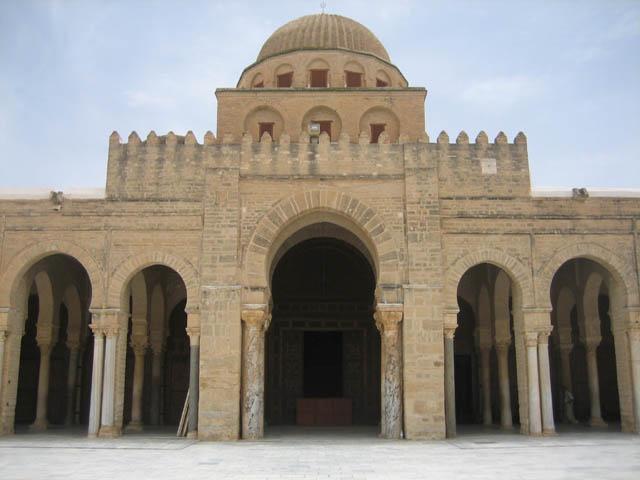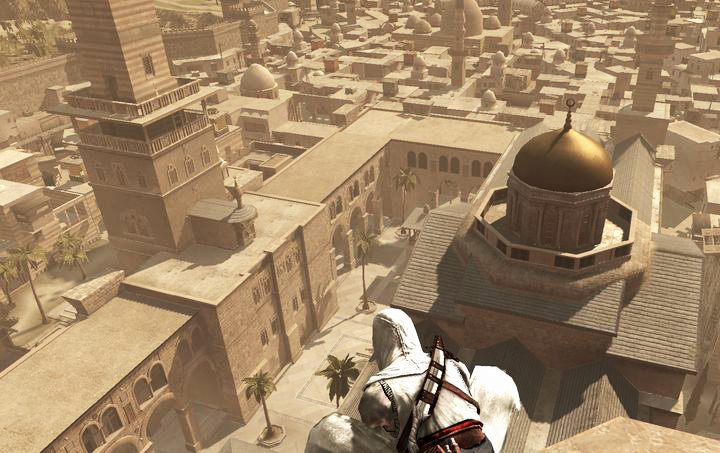 |
Presented Saturday, October 3, 2020 “Learning and the City in the Early Islamic World (632–1067 CE).” Courtney Lesoon AKPIA@MIT PhD Candidate Courtney Lesoon is an AKPIA PhD Candidate at MIT. She earned her BA in the History of Art and her MA in Modern Middle Eastern & North African Studies. Before arriving at MIT, Courtney also worked as a Research Assistant at LACMA. Her dissertation is an urban history of learning in the early Islamic world while her other interests include mosque architecture outside of the Islamic world, Ottoman Damascene interiors, and all things medieval and Mediterranean. Photo: Jami’ Uqba Ibn Nafi’, 817–838 CE, Kairouan, Tunisia.© Mohamed Elshahed, courtesy of Aga Khan Documentation Center, MIT Libraries. |
| Abstract: A social and urban history of higher learning in the early Islamic world, this dissertation examines an era (632–1067 CE) before the institutionalization of higher education via the state-appropriation of the endowed Islamic college (madrasa) in the eleventh century. Drawing on primary sources rarely considered by architectural or urban historians, this study examines pre-madrasa learning practices through an urban spatial lens and suggests that education in the Islamic world, even before its formal institutionalization, constituted a system. This system, which can be understood in spatial terms, was urban in its practice and was conducted in specific places inside Islamic cities. In its execution, learning in the early Islamic world was integrated with and generative of important social exchanges outside itself, e.g., trade, religious practice, and bureaucracy. In short, this study posits that higher learning in the early Islamic world was a key formative force of the societal process called urbanism. | |
 |
Presented Saturday, August 15, 2020 Glaire D. Anderson is an historian of Islamic visual culture during the age of the caliphs (650-1250), with a focus on early Islamic Iberia. Anderson received her PhD from the History, Theory & Criticism of Architecture/Aga Khan Program for Islamic Architecture at MIT. Her work has been recognised by the American Council of Learned Societies, the College Art Association, the Society of Architectural Historians, and the Association for Spanish & Portuguese Historical Studies, among others. |
| Abstract: Islamic architecture and visual culture has a surprisingly low profile in the global digital heritage landscape. The potential for change exists, as institutions are using 3D digitization and other visual technologies to document and disseminate global cultural heritage. The nonprofit CyArk has led this process to digitally record, archive, and share ‘the world’s most significant cultural heritage’ since 2003, recently partnering with Google Arts & Culture in its efforts. Likewise, major museums such as the Smithsonian and the British Museum have embraced 3D capture technologies to carry out their mission of education and widening access to collections. However, such organizations have not yet adequately addressed Islamic visual culture in such efforts, despite growing calls for decolonization in higher education and the digital humanities. A similar situation pertains if we look beyond the academy, to popular culture and the videogaming industry – a sector that combines technology, visual culture, and history. In the wake of Covid-19, global interest in gaming is increasing. The market for videogames is now anticipated to grow to over 200 billion by 2023, and to be driven by emerging markets, including the Middle East and North Africa. Games with historical themes represent an important segment of the overall product landscape, yet available games are almost exclusively focused on European or Anglo-American history. Gamers who play the most popular historical games, for example, must rely on mods (alterations created by players and fans) if they want content on Islamic history and civilization. This is despite the mainstream success of Assassin’s Creed (released in 2007), whose outstanding immersive visualisation of 12th century Damascus and other cities in the region earned universal acclaim, established the game as a classic in the industry, and spawned a successful historical game series eleven titles strong. With the launch of its related Discovery Tour of Ancient Egypt, its developer aspires now not only to entertain but to educate. The low profile of medieval Islamic sites and objects in this digital and cultural landscape problematically reflects persistent hierarchies of knowledge production and risks perpetuating them, implying that the monuments, landscapes, objects, and histories of Islamic societies are not significant on a global scale. At stake is the relationship between decolonization and knowledge as these are deployed and consumed online. For those of us with expertise in Islamic architecture, urbanism, visual culture and history, how can we take our knowledge beyond the academy, to diversify this digital cultural landscape? In this talk I discuss a potential strategy I’m considering, combining current trends in entrepreneurship and the digital GLAM (Galleries, Libraries, Archives, Museums) movement. |
|